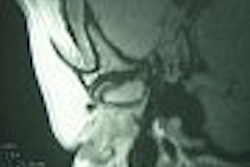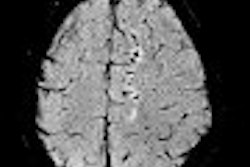The past several years have seen considerable progress in the development and application of functional magnetic resonance imaging (fMRI). A noninvasive tool for measuring human brain function, fMRI offers potential applications that have yet to be discovered. The technology's seemingly limitless applications run from presurgical mapping for assessing neurological risk to discovering areas of the brain affected by central nervous system (CNS) disorders.
Functional MRI enables an examination of brain activity during cognitive, sensory, and motor tasks, providing a powerful means to identify disrupted neural circuits. These disrupted circuits underlie psychiatric and CNS disorders such as ADHD, Alzheimer's disease (AD), and Parkinson's disease. Task-activated fMRI will become a valuable tool for bridging the gap between clinical measures, which are inherently limited in terms of reliability and sensitivity, and biological markers that measure the integrity of neural circuitry mediating mental processes. Task-activated fMRI will also be useful for measuring the effects of therapies on neural circuitry in many neurodegenerative and neurodevelopmental disorders.
Traditional approaches to diagnosing and assessing therapeutic efficacy on CNS disorders come from clinical instruments that include self-report or behavioral measures of symptoms. These neuropsychological measures include standardized tests of cognitive processes, such as attention, working memory, processing speed, and motor control.
Such measures can yield information about the cognitive and motor processes affected in diseases such as Parkinson's disease or ADHD, but they do not provide critical information about the neural systems that underlie change in disease progression or changes in behavioral performance associated with therapies. Furthermore, existing clinical outcome measures are often fraught with problems concerning reliability and sensitivity, and may not accurately reflect changes in disease progression or symptom modulation as a function of therapeutic intervention.
Early diagnosis of diseases such as Alzheimer's disease is an area of intense research. Increasing evidence shows that the pathological process associated with AD may begin decades prior to diagnosis (Snowdon et al, 1996). This is true of other CNS disorders as well (Paulsen et al, in press). Early identification of at-risk populations is essential for evaluating therapies designed to prevent or delay the devastating changes in cognition, behavior, and activities of daily living. Identifying at-risk individuals typically relies on age, family history, clinical testing, laboratory tests, genetic screening, and, more recently, neuroimaging.
Approximately 60% of individuals with mild cognitive impairment (MCI), characterized by isolated memory dysfunction, eventually develop AD. Unfortunately, it is currently not possible to distinguish the MCI subjects who will develop progressive dementia from those who will not.
Task-activated fMRI has the potential for being sensitive to early changes in AD and other disorders by "stressing" neural systems that undergo neuropathological changes from this disease. Well-designed, targeted tasks can reliably activate brain regions that AD first affects (medial temporal lobe, posterior cingulate).
Likewise, as the search for more effective therapeutic agents intensifies, it is critical to identify neurobiological markers that are reliable and sensitive to the neural systems being targeted. The markers also need to be capable of measuring variables that coincide with clinical outcomes. PET and single-photon emission computed tomography (SPECT) biomarkers represent other techniques being used to understand neural activity associated with brain pathology. These techniques have been used to investigate the effects of potential neuroprotective drugs and to study Parkinson's disease progression.
The most important limitation of these imaging measures is that they record resting brain activity and do not measure the brain's response to cognitive or motor behaviors that stress neural systems directly affected by disease. Methodological concerns will likely limit PET's widespread application as a tool for measuring brain activation in diseases such as Parkinson's disease. Specific use of short half-life isotopes, like H2O15, requires the onsite availability of a cyclotron, thereby limiting PET to a few medical centers.
Functional MRI's role
Considerable progress has been made in the development and application of this procedure for measuring human brain function at high spatial and temporal resolution. Functional MRI has the potential to become a powerful tool in the diagnosis and drug discovery process. Existing technologies for measuring the efficacy of drugs designed to treat CNS disorders currently rely on paper-and-pencil tests, which have been shown to have limited reliability and sensitivity, thereby limiting pharmaceutical companies from moving new agents through the discovery process as quickly as possible. In contrast, fMRI can provide quantitative measures of drug effectiveness, and potentially offer more sensitive results with increased reliability and reproducibility.
Radiology's role
Functional MRI is likely to become a leading imaging tool of the future. With a straightforward goal of improving patient management and outcomes, fMRI will become more prominent in clinical settings. Clinical fMRI is likely to be incorporated into the referral patterns of neurologists and psychiatrists when those clinicians can order a functional MRI test as easily as they order an x-ray. What does all this mean for the radiology community?
First and foremost, radiologists can expand the opportunities available to them by integrating fMRI into the services they offer. Broadening the role of radiologists and expanding their role in patient management beyond simple characterization of anatomical abnormalities to the integration of anatomy and function will elevate their position in the medical community. The augmented services offered to clinicians will result in more effective medical care to patients with psychiatric or CNS disorders.
To realize this goal, the MR technologist and radiologist must make fMRI technology and clinical applications available and readily manageable. Functional MRI data acquisition is within reach of a radiology service that has access to conventional (1.5-tesla) or high-field (3-tesla) MR scanners capable of acquiring, managing, and processing high-quality MRI data.
A clinical fMRI program would need to integrate a hardware and software system to develop clinical applications. An integrated system refers to the capability to synchronize image acquisition with stimulus presentation (the activation task), online acquisition of behavioral performance measures, quality control initiatives to minimize and correct head movement, and data analysis and report procedures. With a properly designed system, an MR technologist can be trained in the procedures required for familiarizing the patient with activation tasks, positioning the patient in the scanner to minimize head movement, and monitoring online the successful acquisition of behavioral and functional images.
Functional MRI data analysis procedures involve blood oxygen level detection (BOLD) MR signal extraction and correlation with behavioral measures of interest, co-registration of the resulting functional activation maps with high-resolution anatomical data, and summarization of MR signal change in prespecified regions of interest (based on suspected pathology), including statistical comparisons of patients with ranges acceptable for normal healthy populations.
Radiological interpretation would appear to represent the greatest hurdle at this time. Interpreting fMRI activation maps in the context of multiple activation tasks targeted at very specific disorders would require a very demanding skill-development period. However, turnkey solutions are being developed that minimize the training period required to interpret these complex datasets and provide summary reports to clinicians.
Several centers in the U.S. have established fMRI services in the context of presurgical management. The number of centers is expected to grow as fMRI's utility is demonstrated through clinical usage.
The number of medical centers routinely using fMRI as a tool to assess patients with CNS disorders is minimal, but growing. In addition to overcoming the technical hurdles, no CPT code is available at this time to allow direct fMRI reimbursement. However, as neuroradiologists become more familiar with this technology and the potential for improved patient care increases, referral patterns can be established to drive the reimbursement process forward.
Functional MRI technology has provided fascinating insights into how the brain functions, both in healthy populations and those with CNS disorders. Given the advantages that fMRI technology offers over existing imaging methods, fMRI technology will inevitably shape the future of providing diagnostic care and bringing therapeutic agents effectively and expeditiously to market.
By Dr. Catherine Elsinger
AuntMinnie.com contributing writer
November 8, 2004
Dr. Elsinger is the director of research at Neurognostics, a Milwaukee-based fMRI clinical research service company founded in 2003. The company specializes in the use of fMRI technology for the early diagnosis and longitudinal assessment of CNS disorders. For further details and information, Neurognostics can be reached at 414-727-7950 or via its Web site, www.neurognostics.com.
Bibliography
Paulsen J.S., Zimbelman J.L., Hinton S.C., Langbehn D.R., Leveroni C.L., Benjamin M.L., and Rao S.M., "An fMRI biomarker of early neuronal dysfunction in presymptomatic Huntington's disease." American Journal of Neuroradiology. In press.
Snowden D.A., Kemper S.J., Mortimer J.A., Greiner L.H., Wekstein D.R., Markesbery W.R., "Linguistic ability in early life and cognitive function and Alzheimer's disease in late life. Findings from the Nun Study." Journal of the American Medical Association. February 1996, Vol. 275:7, pp. 528-532.
Related Reading
Elsinger C.L., Rao S.M., Zimbelman J.L., Reynolds N.C., Blindauer K A., and Hoffmann R.G., (2003). "Neural basis for impaired time reproduction in Parkinson's disease: An fMRI study." Journal of the International Neuropsychological Society. November 2003, Vol. 9:7, pp. 1088-1098.
Raz A., "Brain Imaging Data of ADHD." Psychiatric Times. August 2004, Vol. 21:9.
fMRI used to predict post-op language problems, July 15, 2003
Teenage wasteland? fMRI study shows adolescent brain is short on motivation, March 19, 2004
Brain hard-wired for empathy: study, November 7, 2003
Same parts of brain say "ouch" when hurt physically or emotionally, October 24, 2003
Copyright © 2004 Neurognostics



















